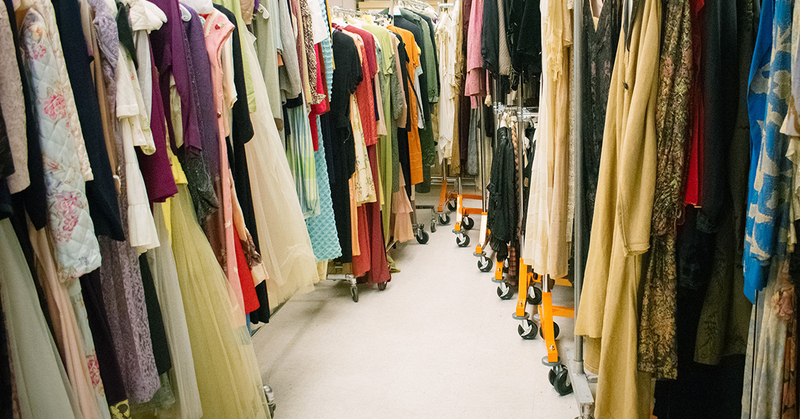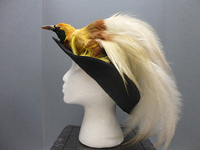The Textiles and Apparel Historic Costume Collection
The Textiles and Apparel Historic Costume Collection, housed within the Jim Moran College of Entrepreneurship, is a collection of 5,000+ objects encompassing a range of three-dimensional objects such as textiles, articles of clothing and accessories for women, men, and children, including a limited number of national dress costumes. Our objects primarily date from the 19th century to the present, but we have some rare pre-Columbian textile pieces and older apparel items as well. The national dress collection includes items from the Seminole Nation. The Historic Costume Collection started with a donation from the Choate family of Tallahassee; faculty, students, alumni, and other interested parties have been adding to it since. The vision is to collect and exhibit objects that demonstrate the technical, aesthetic, and social changes that are associated with dress.
Dress, in its broadest sense, has long been a vessel for showcasing society’s power and meaning about appearance. Throughout history, cultures have created their own clothing traditions that include unique designs and intricate details. Various cultures have their own clothing decoration traditions like beadwork, dyeing techniques, and of course, embroidery. Embroidery has taken many different forms throughout history, with different cultures having their own unique techniques and designs. Embroidery has even been used by some cultures as a sign of high social status and wealth.
The history of our country can be viewed through the lens of hats that have graced the heads of both men and women. Hats can be both a frivolous accessory and required necessity. For example, headwear for women became required during the Middle Ages when the church decreed that hair must be covered. Over time, hats have come to hold almost a totemic power, able to signify class, gender, occupation, and other information. Even hat protocol has symbolic value; from doffing your hat when you meet a lady to launching mortar boards into the air. Hats have long been the subject of both critique and acclaim.
Hats embellished with elaborate feathers were features receiving both applause and ridicule. Exotic feathers, even entire birds, graced the brims and crowns of luxury chapeaus. Unfortunately, the plumage industry was responsible for the deaths of hundreds of millions of birds. Significant conservation efforts and foundations such as the American Audubon Society were established for the preservation of wild birds. Ostrich plumes, however, remained popular since the establishment of ostrich farms enabled the large feathers to be safely removed from the birds without causing injury. Eventually, laws banning the importation of exotic feathers and the start of World War I, led to the end of extravagant plumage on hats.
Likewise, fur and leather have long been held with both esteem and condemnation. There are several leather and fur pieces in the collection providing a glimpse into history. From the 19th century through the 1940s, monkey fur was in high demand for making capes, jackets, and accenting garments. One of the rare pieces in our collection is a muff dating from the late 1800s. Muffs were utilized to keep the wearer's hands warm in cold conditions. It is likely the fur used in the muff is that of the Black Colobus, a species of monkey from western central Africa. The Colobus monkey population plummeted due to the fur trade. Although fur is still used in garments today, premium quality faux fur, made from acrylic and modacrylics as well as vegan leather made from mycelium and cactus.
The Historic Costume Collection, unfortunately, has not always received the attention that it deserves; however, this is in the process of change. The goal of the collection, with assistance from the Pen & Inc. Grant is to become a central resource for education of historic dress and fashion through teaching and research at Florida State University, as well as through outreach to communities throughout Florida and beyond. Specifically, the goals for the collection are to:
- Photograph and digitize the collection’s holdings to make them available for the public, thereby increasing the collection’s reach and impact.
- Provide more opportunities for students to hone and illustrate their talents in artifact research, storage, and exhibition.
- Provide access to the artifacts for researchers and scholars including faculty, undergraduate and graduate students, industry partners and community members through direct and electronic means.
- Establish a group of supporters and provide opportunities for service and volunteering, thereby increasing engagement with the community.
- Create professional-quality exhibitions that display excellence in research and learning.





